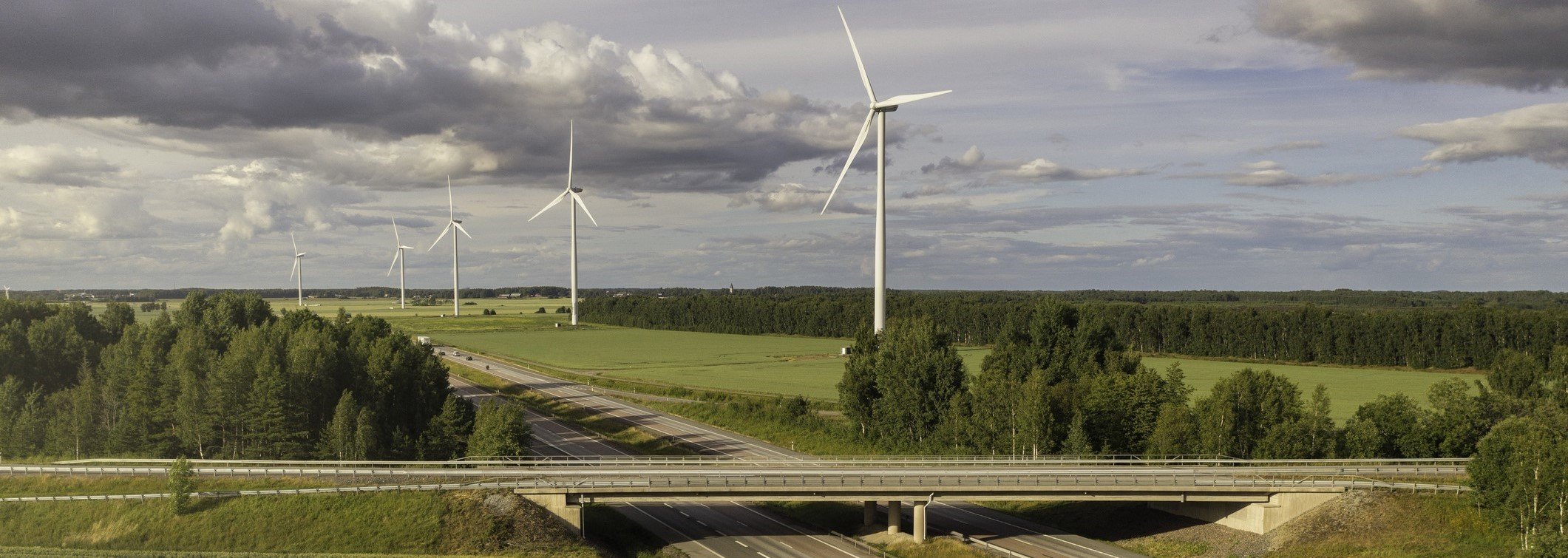
Climate change, poverty, and economic and social inequality operate in a vicious, self-perpetuating cycle. You’ve probably seen some of the statistics – for example, people of color are 75% more likely to live near toxic waste, and the wealthiest 1% are responsible for twice as many GHG emissions as the poorest 50%.
Why is this the case?
Years of institutionalized racism and systemic inequality have created a dynamic where disadvantaged groups, those least responsible for climate change, bear the greatest burden. Learn more about the inequities of climate change, why they exist, and how they impact our most vulnerable communities.
All businesses impact vulnerable communities in some way, whether they realize it or not. As a business, it’s your responsibility to ensure your presence doesn’t perpetuate the vicious cycle by increasing strain on these communities. And today’s consumers, investors, and other key stakeholders expect it, too.
You might be wondering how to take action on such a systemic problem. Read on to learn 6 ways your business can meaningfully tackle the inequities of climate change.
1. Remove Silos Between Environmental & Social
First and foremost, it’s critical that you connect the ‘E’ and ‘S’ in your corporate sustainability work. Historically, social impact and diversity, equity, and inclusion (DEI) efforts have often been viewed as separate from environmental issues or broader ESG strategies. Yet an unhealthy planet and an unhealthy community often share the same root causes. Hence, environmental issues are inherently social issues.
Our socioeconomic system and sectors like energy, transportation, buildings, and agriculture are key contributors not only to climate change but also to community well-being. Businesses produce enormous amounts of GHG emissions, creating drastically different impacts on communities and countries based on race, income, and ethnicity. These communities are your employees and customers!
By removing the lines between environmental and social issues in your company, you’ll paint a clearer picture of your impact, uncover opportunities for efficiency and innovation, and meet your goals faster.
To connect the ‘E’ and the ‘S’ in your organization, start by asking yourself:
- How do your products, services, and operations affect people and the environment?
- Where are your facilities located? Is your manufacturing facility located in an affluent neighborhood or industrial district?
- Where are your suppliers’ facilities located and how do those facilities impact the local community?
- How are local residents impacted by your presence – socially, economically, and physically?
- What benefits and challenges do your facilities present to the local community?
- In what ways are local environmental and social issues linked, and how does your organization play a role? For instance, do lower income communities live closer to the industrial district of your city, exposing them to higher amounts of pollution and airborne toxins?
2. Create a Climate Mitigation & Adaptation Strategy
In addition to mapping out how you’ll pivot your operations, assets, and business model to align with the 1.5°C ambition, you also need to think about mitigation and adaptation. Even if we limit warming to 1.5°C by 2050, extreme weather will still become more severe and more frequent. Extreme weather and climate disasters will without a doubt impact your business, but vulnerable communities will disproportionately shoulder the burden.
Start creating near- and long-term plans for how you’re going to mitigate and adapt to the consequences of climate change. This strategy should support your company’s growth objectives while driving greater equality and resilience in communities most at risk.
For example, if part of your climate mitigation strategy includes funding afforestation or habitat restoration, are you supporting communities that are experiencing the worst impacts of climate change? Or are you supporting projects in already affluent areas that are relatively well-positioned to weather the next heatwave? The same applies for transitioning to clean energy. If you’re trying to shift to 100% renewable energy by a certain date, work with the factories across your value chain to reduce pollution rather than moving your operations elsewhere. The communities near these industrial facilities need you the most.
Similarly, if part of your climate adaptation strategy involves funding tree-planting projects to reduce the urban heat island effect near your facilities, be sure you’re also funding similar projects in low-income neighborhoods. After all, this is where many of your customers and employees may reside and where heat island effects are felt most severely. Tree canopy cover can provide life-saving protection for these communities!
Whatever your mitigation and adaptation strategies are, it’s about making sure the desired impacts reach communities that need them most.
3. Invest in Projects that Address Root Causes, Not Symptoms
When it comes to the kinds of projects you back as part of your climate, ESG, and DEI efforts, look for those that support immediate community needs and long-term, systemic causes. Donating generators and portable AC units to people experiencing homelessness may provide immediate relief during heat waves but it doesn’t address the long-term issue. In fact, it can even perpetuate the problem.
For instance, during the Portland Heat Dome of 2021, many companies donated water to communities in need. This is a good start, but companies should also consider how to prepare for future extreme heat events. A better long-term solution might be funding nature-based projects that reduce grey spaces in low-income neighborhoods, in addition to delivering water.
Not sure what kinds of projects you should support? Start by partnering with community-based organizations and local NGOs working on the specific issues your organization is best positioned to address.
To meaningfully tackle the inequities of climate change, you need to invest at the root of the issue, not just provide band aid solutions.
How to Center Racial Justice in Your Climate Action Planning
Bridging the gap between climate action and racial justice can feel daunting. Download our guide to learn how to center justice into each element of your climate action plan, from goal setting to GHG emissions reduction.
4. Collaborate with Local Stakeholders & Communities
Stakeholder engagement is a common strategy used among ESG practitioners to uncover the issues that matter most. This exercise involves reaching out to stakeholder groups like employees, customers, suppliers, and investors to see how they feel about your initiatives, what they’d like to see more and less of, and what other feedback they have.
However, local communities are often overlooked as a stakeholder group. Sometimes this is because community groups and local NGOs are viewed as adversaries – they may have even challenged your approach in the past. Most often it’s because the “ripple effects” your business has on local communities are hard to see. Either way, it’s crucial that you leverage everyone, especially local stakeholder groups, in your climate strategy.
As part of your stakeholder engagement work, make an effort to understand:
- How the community feels about your presence in the area
- Any unintended consequences your business is having on their lives (pollution, gentrification of neighborhoods, decreased economic opportunity, etc.)
- What value your business adds or should be adding to the local community
- After you’ve identified gaps and problem areas, collaborate on potential solutions. To really move the needle, involve the local community in your decision-making processes and share power and accountability over the programs you create. Microsoft’s Danielle Decatur put it well during GreenBiz’s VERGE Net Zero conference: “the most important part about working with local community groups is moving at the speed of trust, not your bottom-line.”
5. Engage Your Suppliers Beyond Scope 3 Emissions
When it comes to supplier engagement, Scope 3 emissions have taken center stage. And for good reason – Scope 3 emissions usually account for 80-90% of a company’s total GHG emissions impact. Collaborating with your suppliers to reduce emissions is crucial to reaching global decarbonization goals.
Yet your supply chain is also home to a variety of other social and environmental risks. Unfortunately, some of the most egregious human rights, health, and well-being violations occur deep within the supply chain.
For instance, as part of their climate mitigation efforts, many consumer goods companies with palm oil supply chains are looking for ways to reduce biodiversity loss in sourcing regions like Indonesia and West Africa. Climate change and nature loss are inextricably linked, and the clearing of native forests for palm oil production is one of the leading drivers of deforestation.
However, one of the less visible consequences of deforestation in palm-growing regions is the impact on local indigenous communities. Agricultural expansion leads to decreased natural resource availability, creating conflict, economic hardship, and land disputes. Indigenous groups often have restricted access to their traditional lands and are subjected to unfair agreements with governments and businesses. As a result, many are vulnerable to food insecurity, poverty, and human rights abuses.
Your business has a central role to play in ensuring supplier communities are treated fairly, and transparency is the first step. Be sure to consider how your procurement practices impact sourcing communities holistically, and gather supplier data on topics like forced labor, fair wages, and human rights regularly.
The best way to identify and address these issues is with a boots-on-the-ground approach, but the global nature of today’s supply chains can make this challenging. A good solution is to partner with local NGOs who specialize in responsible sourcing of specific commodities like soy, palm, cocoa, minerals, and fish.
6. Examine Your “Political Footprint”
Political advocacy is an often-overlooked component of climate strategy, but that’s starting to change. Two-faced corporate lobbying – when a company claims to stand for an issue but uses its political voice to undermine progress – is getting more attention in the news. As a result, you may already be feeling pressure from your shareholders to disclose your political spending, lobbying, and trade association memberships. It won’t be long before corporate political spending makes its way into today’s climate reporting frameworks, too.
In addition to double checking that your political spending aligns with your corporate values, use this shifting market trend as an opportunity to take a stand on issues you care about, such as ensuring a just transition to a low-carbon economy.
As a business, your voice matters. Leverage your political influence to advocate for policies that support aggressive decarbonization, equitable clean energy access, and climate mitigation investments for disadvantaged communities. The Inflation Reduction Act, which directs over $40B to communities with environmental justice concerns, is a great example.
In addition to supporting federal policies like the IRA, stay up to date with emerging regulation at the state and even city level. For instance, California passed a law requiring cities to include environmental justice considerations in their updated long-term plans. Use your clout as a local business to back these kinds of policies.
Next Steps
It’s time to stop approaching social and environmental problems through separate lenses. Tackling the inequities of climate change means recognizing the interdependent relationships between issues like GHG emissions, inequality, health, and well-being. Without connecting the two, you risk (unintentionally) perpetuating the vicious cycle of climate change and inequality.
RELATED INSIGHTS
RELATED SOLUTIONS


